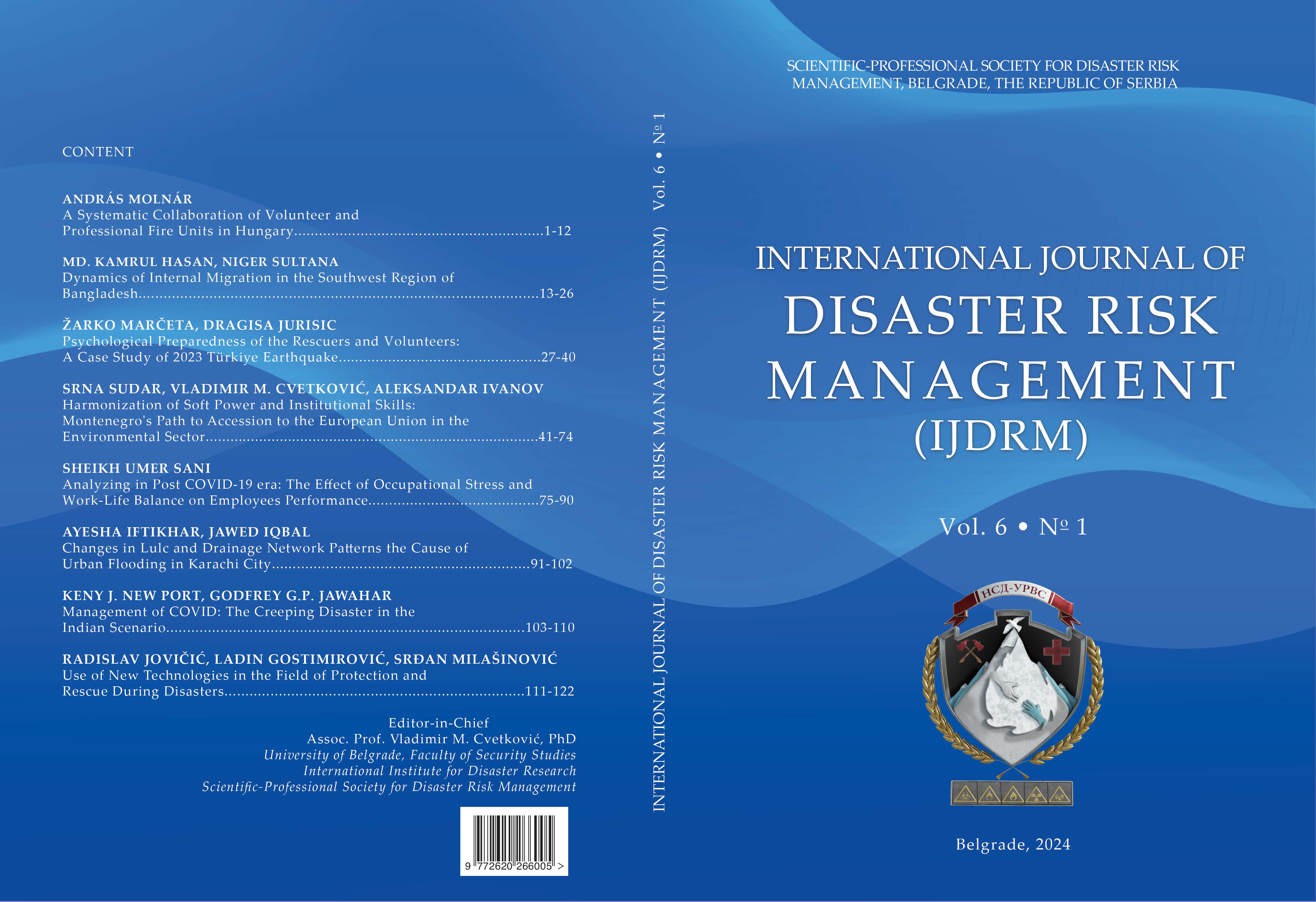Dynamics of Internal Migration in the Southwest Region of Bangladesh
Dynamics of Internal Migration in the Southwest Region of Bangladesh
Author(s): Hasan Kamrul, Sultana NigerSubject(s): Migration Studies
Published by: Naučno-stručno društvo za upravljanje rizicima u vanrednim situacijama
Keywords: internal migration; priority ranking matrix; satisfaction index; economic status index; social status index
Summary/Abstract: Bangladesh is well-known as a developing nation around the world. Migration is common in Bangladesh, particularly within the country. To raise their living conditions (income, housing, education, health, communication, etc.), many people move to new areas. Dacope Upazila is located in the southwestern region of Bangladesh, and this study seeks to examine the factors that contribute to the dynamics of internal migration by assessing the social and economic changes in the living standard of internal migrants following the migration. Both primary and secondary data were analysed statistically. The use of a questionnaire survey has allowed for the collection of primary data. Priority ranking matrix, Satisfaction Index, Economic Status Index (ESI), and Social Status Index (SSI) were computed to analyse the data. Statistical methods were also used to derive demographic information of the migrants. The study found that the majority of migrants were men who were either unemployed or living in poverty. The lack of economic opportunities, the inability to protect one's financial well-being from natural disasters, and the absence of adequate market infrastructure were the primary driving forces of migration. Migratory choices are heavily influenced by economic factors, and a lack of employment opportunities was ranked as the top factor. The Satisfaction Index highlighted the high levels of contentment experienced by internal migrants. Both the ESI and SSI showed greater improvement in the migrants' social and economic standing after migration. One could say that internal migration has a significant effect on the resulting population.
Journal: International Journal of Disaster Risk Management
- Issue Year: 6/2024
- Issue No: 1
- Page Range: 13-26
- Page Count: 14
- Language: English

